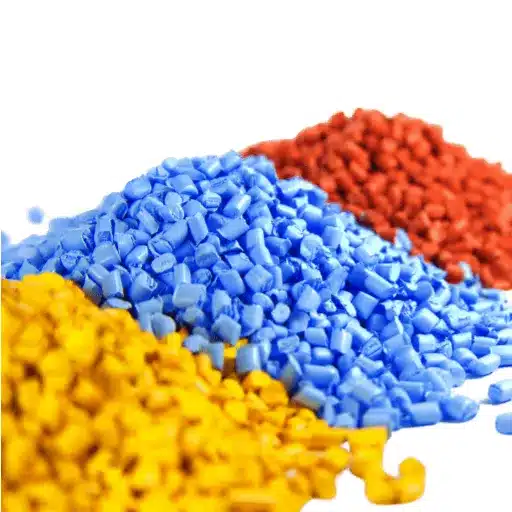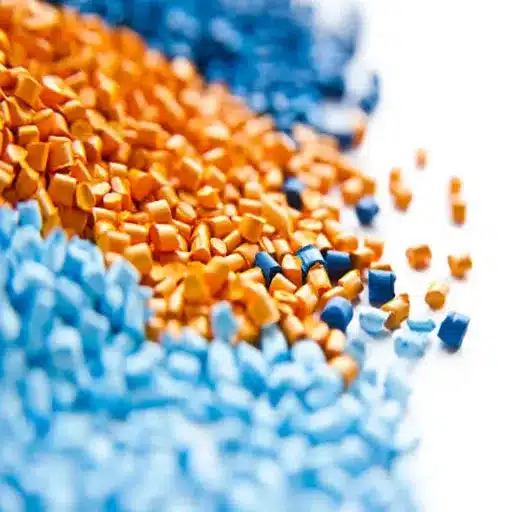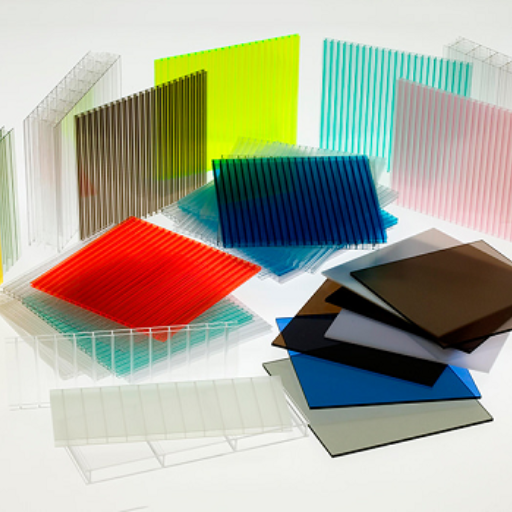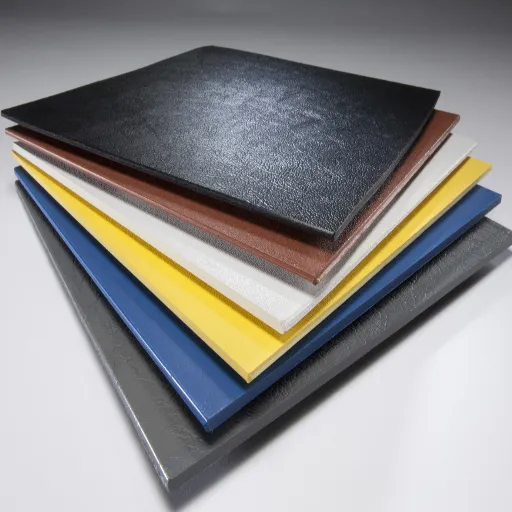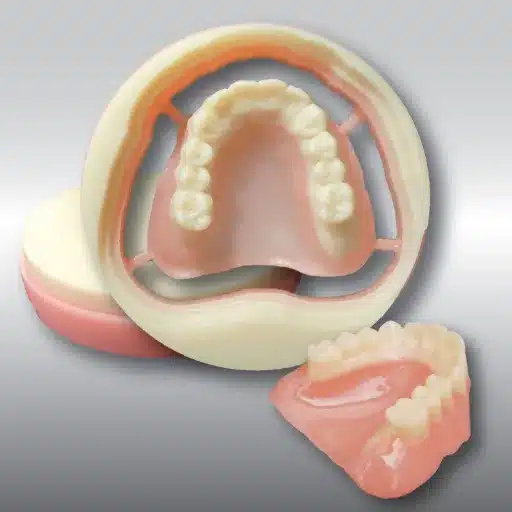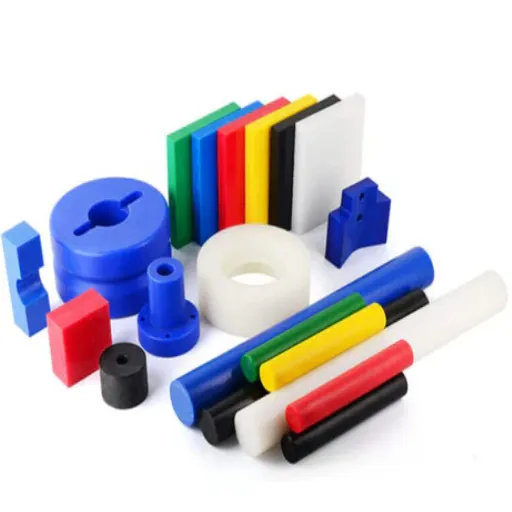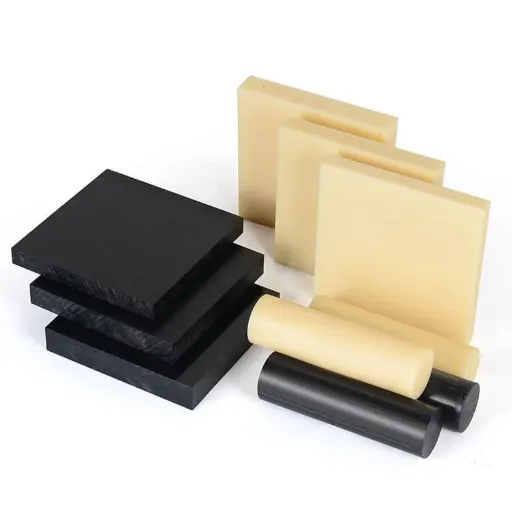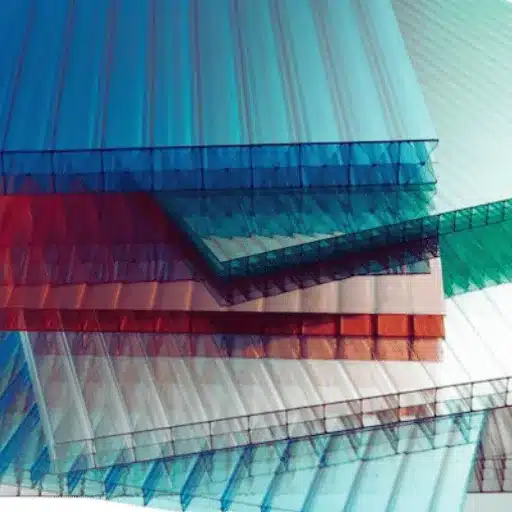Understanding the Properties of ABS
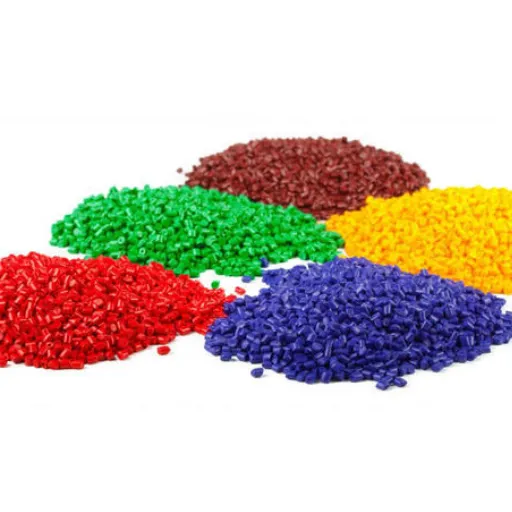
Chemical Composition and Structure
ABS stands for Acrylonitrile Butadiene Styrene, a thermoplastic polymer possessing properties that balance between strength, flexibility, and processability. There are three main monomers in ABS:
- Acrylonitrile – renders chemical resistance and hardness to the polymer
- Butadiene – renders impact resistance and toughness
- Styrene – renders rigidity and a smooth finish
ABS is an amorphous polymer, which means that it doesn’t have any specific crystalline structures. Such a property accounts for ABS’s excellent processability, making it convenient to mold or shape in intricate designs. These three monomers impart the ABS with a characteristic combination of durability and flexibility, making it ideal for use in automotive, electronics, and consumer goods industries.
Structurally, the chemical nature of the material will make it hardy enough to withstand severe environmental conditions like high temperature and chemical exposure. By doing so, it will retain its mechanical properties. With such adaptability of the material, it finds uses in making appliances cast out of protective equipment, emphasizing the far-reaching conflict importance of ABS in designing and manufacturing.
Physical Properties of ABS
Acrylonitrile Butadiene Styrene, or ABS, is a lightweight, durable thermoplastic polymer with versatile physical properties. The main feature of ABS is its ability to resist high impacts. This allows the material to withstand an excessive amount of force without cracking or breaking.
These qualities lend well to the manufacture of goods that require durability and toughness, such as in automotive parts and protective wear. Considering the flexibility of ABS and its ability not to deform under a range of temperature conditions, the material can be considered well-suited for any low-temperature environment or high-temperature situation, maintaining its structural stability without becoming brittle, or the second major reason for ABS being used in industries such as electronics and construction.
ABS has a very good finish and is relatively easy to machine, meaning that it can be molded, shaped, or worked on during manufacture. Its Styrofoam-like smooth finish and ability to be dyed in many colors give it an interpersonal edge in making” usable” products such as household appliances or decorative features. In summary, ABS presents a combination of physical properties that place it in a higher position within modern industries and design applications.
Thermal and Mechanical Characteristics
ABS (Acrylonitrile Butadiene Styrene) has a unique combination of thermal and mechanical properties that make it into many industries, thus making it extremely versatile. Among the better-known thermal properties is this resin’s relatively high melting point-pending upon the grade, which ranges between 190°C and 220°C-due to which it holds up fairly well in scenarios involving exposure to moderate heat without softening or losing its structural integrity.
ABS strength is one of its mechanical properties, and it has high shock resistance. The material maintains its toughness even at low temperatures, which is extremely important for products that are to be subjected to heavy impact or rough treatment. The excellent dimensional stability of ABS keeps the dimensional position of an object under mechanical stress.
One of the useful properties of ABS is its balance between rigidity and flexibility. This makes it possible to develop products that are not only functional but easy to use because of their light weight. From helmets with a reputation for wear, ABS is thermally and mechanically trusted in car parts.
Manufacturing and Processing of ABS

Production Methods of ABS Plastic
Styrene-acrylonitrile resin is primarily produced through polymerization, where acrylonitrile, butadiene, and styrene undergo polymerization reactions. This process is carried out by two principal methods:
- Emulsion Polymerization – The monomers are emulsified in water using suitably chosen surfactants to obtain powders of uniform composition with a high degree of control over particle size distribution.
- Continuous Mass Polymerization – Involves combining monomers directly inside a reactor without using a solvent; hence, purer substances with more consistent properties are obtained.
During production, ratios of the base components can be adjusted to obtain the desired material properties. For example, enhanced chemical resistance can be obtained by increased acrylonitrile content, whereas enhanced impact resistance can be obtained by higher butadiene concentration. Likewise, with an increase in styrene content, the plastic tends to become more rigid and is easier to process.
Processing Conditions for Optimal Performance
The processing conditions have to be given thorough consideration to produce the best quality ABS plastic. Generally, grades vary in a narrow margin, with the processing temperatures ranging from 220°C to 250°C. Consistent control of temperature within this range is considered to be very crucial as any sazgulaing might lead to degradation or inconsistency in the quality of the product.
Key Processing Parameters:
- Processing Temperature: 220°C to 250°C
- Drying Temperature: 80°C to 90°C
- Drying Time: 3-4 hours
- Moisture Content: Below 0.1%
- Injection Pressure: 70-120 MPa
Another important factor in ABS processing is the control of moisture. This being a hygroscopic material, it absorbs atmospheric moisture, which might end up in defects on the surface or in deterioration of mechanical properties if desorption of moisture is not accomplished before processing.
Additive Manufacturing with ABS
Additive manufacturing gives rise to myriad possibilities for using ABS (Acrylonitrile Butadiene Styrene) in advanced applications. ABS being almost an all-time star in the field, various properties it exhibits-especially its capability to withstand impact forces and environmental factors while maintaining temperature.
As a filament for 3D printing, ABS acts as a very flexible material for generating durable prototypes, functional parts, and customized products. Parameters such as printing temperature (usually 210-250 degrees C) and bed-adhesion method are important in getting good results from employing ABS.
Applications of ABS in Various Industries
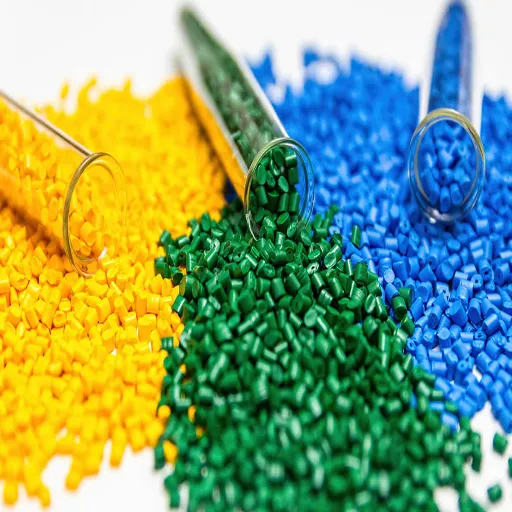
Automotive Applications of ABS
In all walks of life, ABS occupies a vital place as it has the unique combination of strength, durability, and lightweight features. In a very practical sense, the engineers can now design high-performance parts while maintaining cost and efficiency. Here are the five applications of ABS in the automotive sphere:
Dashboard Components
The dashboards of most vehicles are made from ABS owing to its impact resistance, ease of molding, and finishing options. This makes it durable and highly aesthetic, being able to take on daily assaults of wear and tear.
Interior Trim Panels
Most interior trim panels, such as door panels, pillar covers, and even seat backrests, are made from ABS. This light weighting aids in reducing the overall weight of the car, furthering fuel efficiency, while not compromising on the strength required.
Exterior Body Parts
ABS is used for manufacturing automobile parts such as bumpers, wheel covers, and mirror housings. These are places and parts that were protected from minor collisions, insults from scratching, and environmental factors like UV rays and temperature extremes by their high-impact resistance.
Air Ventilation Systems
ABS is widely used for air ventilation grilles and ducts because it can withstand elevated temperatures and stays dimensionally stable, thus ensuring consistent air flow and reliability through time.
Grille Components
ABS is used for front grilles and decorative trims on the car exterior. Its rigidity and easy machinability lend themselves well to intricate designs without compromising durability, thus making it the material of choice for such conspicuous components.
Electronics and Consumer Goods
Acrylonitrile Butadiene Styrene (ABS) is a material highly sought after in the electronics and consumer goods industries for its strength, impact resistance, and ease of processing. It is primarily used in products that require electrical insulation and resistance to heat, such as computer keyboards, printers, and protective casings for various electronic instruments, where safety and durability are important.
Basically, lightweight materials have been exploited in the manufacture of domestic appliances like vacuum cleaners, kitchen utensils, and even personal care products such as electric razors. By keeping the weight down while retaining the structural strength, ABS improves the portability of the products and thereby the user experience.
Innovative Uses in 3D Printing
ABS possesses a class of materials that has revolutionized the 3D-printing industry due to its uses and unique properties. The following are five unique utilizations in ABS 3D printing:
Prototyping for Product Development
Products of heavy ABS carry out the prototyping of designs during development, which are considered dimensionally accurate and tested under mechanical stress. So, it moves toward a functional testing phase wherein it is used for developing products.
Consumer Product Customization
All types of product customization, such as phone cases, household articles of decor, and shoes, are done using ABS 3D printing. Easy printing and finishing to a smooth surface make it a convenient material for manufacturing personalized and good-looking consumer products.
Educational Models and Tools
The research institutions, along with educational institutions, use ABS for models to demonstrate complicated scientific or engineering concepts. As it is sturdy, such models can withstand handling quite often in classrooms, besides being a cheap option for others.
Automotive Spare Parts
ABS is the most common material for 3D printing small automotive parts such as clips, trims, or dashboard parts. Its resistance to impact and its ability to mimic an injection molding help manufacturers make replacements fast without expensive molds.
Medical Devices and Assistive Tools
The 3D printing of assistive tools, orthotic devices, and surgical guides of ABS is a blessing for the medical fraternity. The biocompatibility of ABS and the ease of sterilization make it a good candidate for manufacturing custom medical implementations.
Advantages and Disadvantages of ABS Plastic
Benefits of Using ABS Material
- Durability and Impact Resistance: The durability of ABS plastic and its capacity to absorb considerable physical impacts render it very useful in all cases where materials are required to endure stress but not crack or break, such as automotive components and protective casings.
- Lightweight Yet Strong: As it passes as a lightweight polymer, ABS offers strength and rigidity to a great extent. This makes it easy to use and transport while still having the required structural integrity for other applications bearing some demand.
- Thermal Stability: With its extraordinary thermal resistance, ABS retains its shape and other properties in extremely hot environments. Such an ability lends itself to producing parts such as electrical enclosures that require heat resistance.
- Cost-Effectiveness: Since it is one of the most widely manufactured thermoplastics, ABS is quite cheap compared to other high-performance materials. The lower costs of ABS and the very high versatility make it one of the choices for prototyping as well as for larger production.
- Ease of Manufacturing: ABS is well-suited for many manufacturing processes, like injection molding and 3D printing. With its very low melting temperature, one can simply machine it or mold it into very complex geometries and have a very fast production cycle.
Limitations and Environmental Concerns
Integrity notwithstanding, ABS plastics bear some quite conspicuous limitations. One such major problem concerns its lower resistance to UV radiation, which leads to discoloration or degradation if exposed to sunlight for some time. While ABS is tough and impact-resistant, it is perhaps not the best material for those applications needing high heat resistance.
Environmental Impact: ABS plastics bring forth the greatest of concerns, even environmentally. Being a petroleum-based variety of plastics, the chief raw materials are fossil fuels; subsequent greenhouse gas emissions can be measured next to their production. ABS plastic is a sort of plastic capable of being recycled, but very few plastics get recycled in the world.
Comparative Analysis with Other Plastics
ABS is considered good regarding impact resistance and design flexibility, PVC has the best chemical resistance and economic construction, and PC is known for extremely high clarity and the buildup of properties.
| Property | ABS | PVC | PC |
|---|---|---|---|
| Impact Resistance | High | Moderate | Superior |
| Chemical Resistance | Good | Excellent | Moderate |
| Temperature Resistance | Moderate | Limited | Excellent |
| Aesthetic Versatility | Versatile | Various finishes | Transparent |
| Common Applications | Electronics, Toys | Construction, Signage | Safety, Automotive |
Emerging Trends and Innovations in ABS
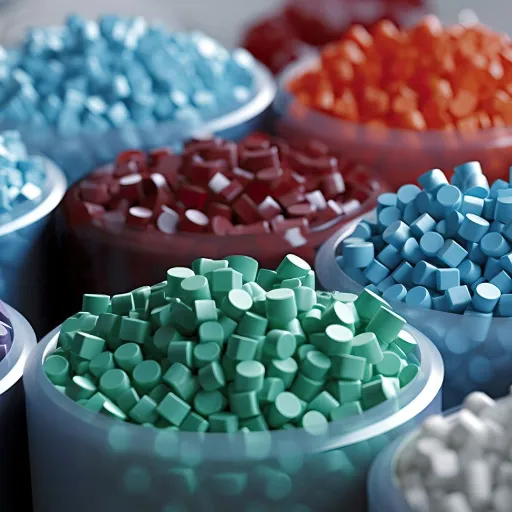
Sustainable Alternatives to Traditional ABS
The increasing global attention on sustainability propelled the rise of environmentally friendly alternatives to the conventional Acrylonitrile Butadiene Styrene (ABS). One area of innovation that includes bio-based ABS uses organic raw materials such as starch derivatives or polylactic acid (PLA). The objective of these bio-based choices is to minimize the use of petroleum-based components and so reduce greenhouse gas emissions during their manufacture.
Another alternative is recycled ABS, derived from processing post-industrial and post-consumer ABS wastes. This circular approach reduces waste disposal, conserves raw materials, and presents performance characteristics that are comparable to those of virgin ABS.
Advancements in 3D Printing Technologies
In recent times, there have been rapid developments in 3D printing technologies, which have shaped industries and opened opportunities for further innovation. One lies with the improvement of printing speeds and precision to optimize the realization of complex designs. High-resolution printing and advanced software enable manufacturers to produce components that are complex yet lightweight, a feat believed to be impossible not long ago.
Future Applications in Cutting-Edge Industries
The progress in 3D printing has enabled radical applications across many advanced industries:
Healthcare and Medicine
3D printing is revolutionizing the healthcare industry through custom prosthetics, dental implants, to 3D-printed organs by bioprinting. Personalized healthcare, like patient-specific surgical tools and implants, is viable, hence better patient results and lower production times.
Aerospace and Defense
In aerospace, 3D printing makes lightweight, durable parts while cutting down on material waste and production costs. For example, GE Aviation 3D prints fuel nozzles that are five times more durable and 25% lighter than those produced using conventional manufacturing processes.
Automotive Industry
Automakers produce prototypes, custom car parts, and tools faster and with more efficiency than traditional methods through 3D printing. Firms such as Ford and Bugatti have started the use of 3D-printed structures in cars for better performance and less use of materials.
Construction and Architecture
Large-scale 3D printing can change construction by carrying out building projects faster, cheaper, and greener. Your typical houses and bridges are being 3D-printed with advanced concrete mixtures.
Consumer Goods and Fashion
Fashion and consumer goods are engaging in 3D printing to produce customized items ranging from jewelry to shoes to accessories. Designers are pushing the boundaries of creativity, designing objects so intricate that traditional manufacturing would be impossible.
Frequently Asked Questions (FAQ)
A: ABS is an acronym for acrylonitrile butadiene styrene, an all-purpose plastic with a wide range of uses with great mechanical properties. It is being widely used for making ABS kits since it is tough and durable. Some commercial uses of ABS are: good impact strength, heat deflection temperature, and good electrical insulation.
A: It is one of the most common thermoplastics used in 3D printing because it has good flow properties and desirable application characteristics. During printing, ABS is heated to its melting point so that it flows well and deposits layer upon layer while adhering satisfactorily to previous layers, forming strong and durable components.
A: ABS finds medical equipment applications, such as in nebulizers and other equipment housings. ABS can be used for durably making medical devices due to its impact-resistant nature, so that they can endure rigorous usage.
A: Compared to polystyrene and many other plastics, ABS offers advantageous traits such as higher impact strength and heat deflection temperature. This makes ABS suitable for uses exposed to elevated temperatures or requiring wear.
A: ABS is easy to machine, thereby enabling precise fabrication and finishing of components, which ultimately is of enormous benefit in the manufacturing process, especially where intricate designs are involved or tolerances must be crafted to specific dimensions.
A: ABS plastic is considered to be used widely in several applications, including automotive parts, consumer electronics, and even musical instruments. Its versatility and affordability lie in competition with many other materials of trade.
A: Though ABS is safe in many situations, there are adverse health effects if safety precautions during the printing of 3D objects are not respected. Ventilation and protective gear are essential to prevent the inhalation of fumes from heated ABS.
A: The coefficient of thermal expansion for ABS material has a relatively low value, so it resists change in shape or dimensions even under temperature changes. This characteristic is highly desired for ABS applications where temperature changes are highly probable.
A: The melting point of ABS is around 220 °C (428 °F). Because ABS has a relatively high melting point, it is used in some applications that could subject it to higher temperatures, thereby increasing the heat deflection temperature and (consequently) the level of its application in harsher environments.
A: ABS has been very popular among desktop 3D printers, due to the reason that it is inexpensive and easy to print, and has excellent mechanical properties. Amongst 3D printing, which is being done both at home and commercially, it remains the choice material able to produce high-quality prints that are robust in function.
References
- Harvard ADS: Evaluation for Tensile Properties of ABS Material Specimen Using FDM – An in-depth analysis of ABS material properties and manufacturing.
- University of Maryland: Thermoplastic Types – Includes information on properties, machinability, and impact resistance of ABS.
- Academia.edu: Mechanical Properties of Acrylonitrile Butadiene Styrene- Describes the mechanical properties and temperature ratings of ABS.







